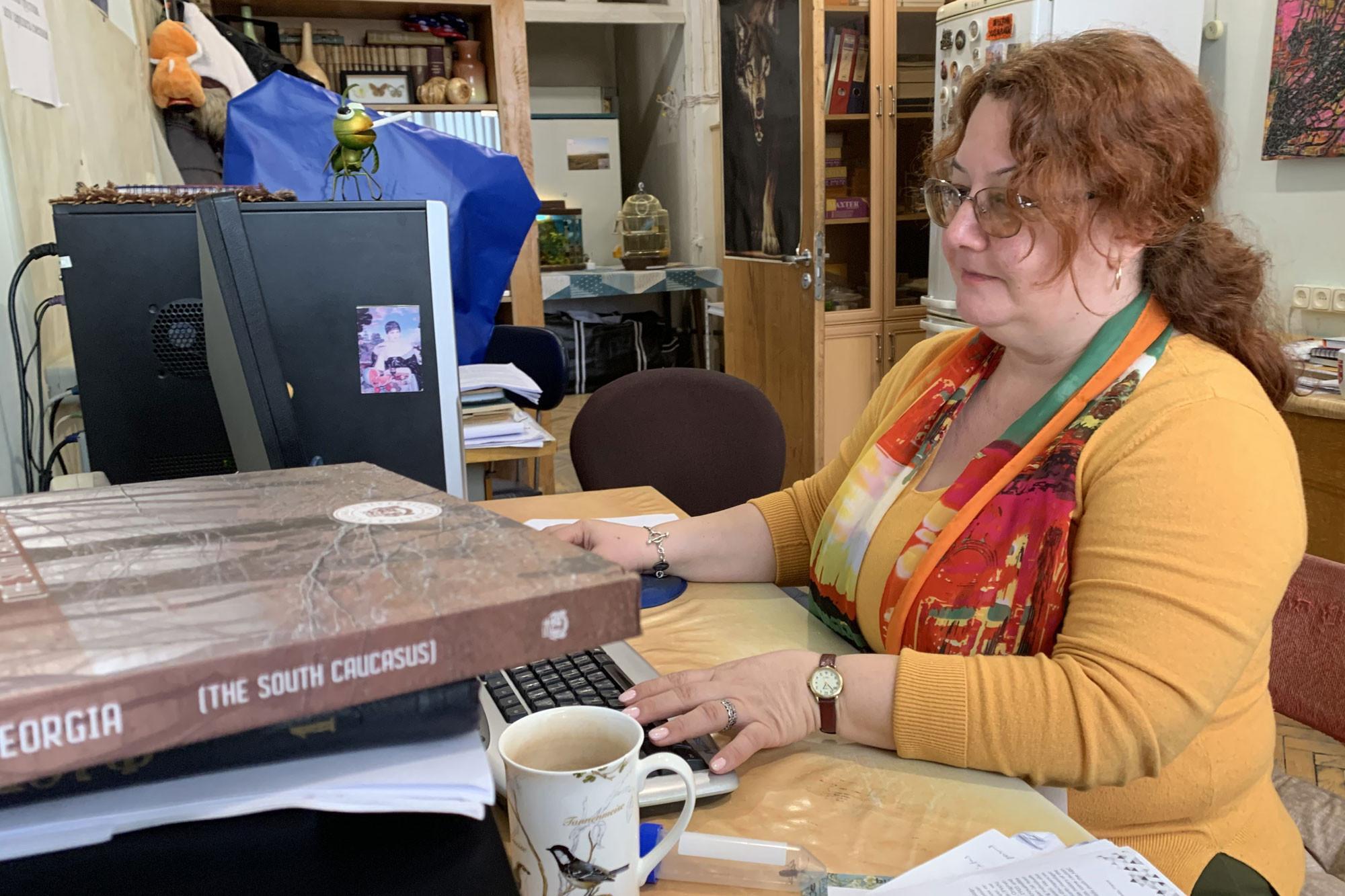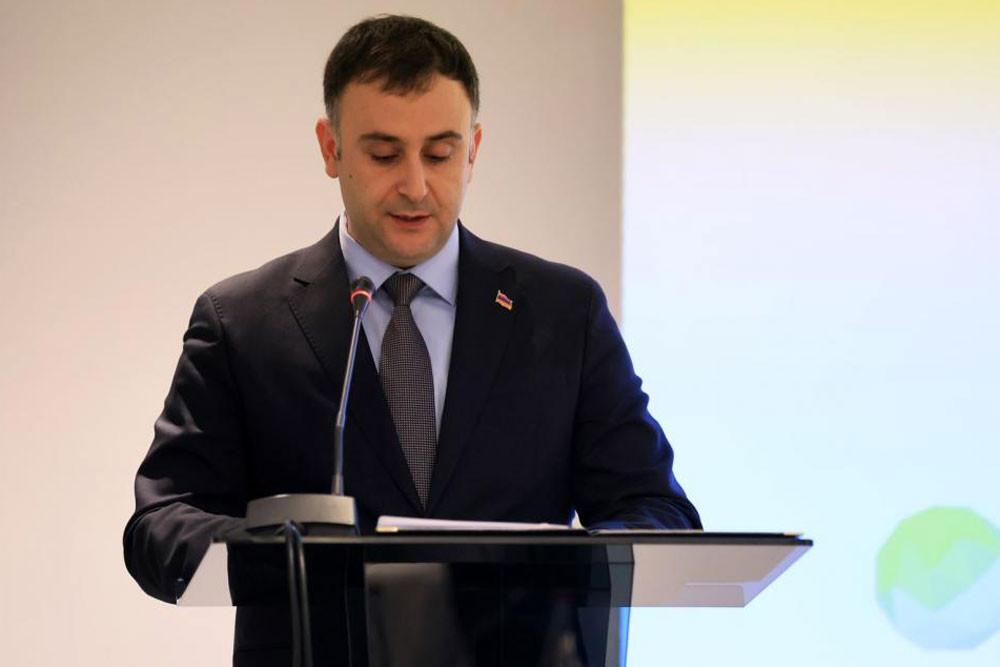
Climate Change, Infected Imported Wood Wreaking Havoc in Armenia’s Sevan National Park
Armenian scientists point to diseased imported timber and climate change as the main culprits for so many pine trees dying in Armenia’s Sevan National Park.
The 342 square kilometer park was founded in 1978 to protect Lake Sevan, the largest body of fresh water in the South Caucasus, and the surrounding area.
A recent study of trees in the park revealed the presence of many various harmful pine beetles including bark beetles (Ips acuminatus, Trypodendron lineatum) and long beetles (Arhopalus rusticus, Acanthocinus aedilis, Acanthocinus griseus, Pogonocherus fasciculatus). Scientists say these species, and others, are expanding in the area, resulting in elevated levels of damage to the local flora.
Voskehat Grigoryan, who heads the Specially Protected Areas and Biodiversity Policy Department at Armenia’s Ministry of Environment, says 8,269 pine trees in the park have dried out.
"The appearance of these species and their spread with great intensity is most likely due to the various uses of imported and infected pine wood in the Sevan National Park and adjacent areas (for example, using it as a building material in recreational buildings)," the group of Armenian scientists attached to the ministry’s Hydrometeorology and Monitoring Center reported.
Gayaneh Karagyan, a leading researcher at the Laboratory of Entomology and Soil Zoology, led the three-year program to study Sevan’s conifers.
She recalls that when they worked in the park last year, the 2023 Sevan Startup Summit was underway. Organizers brought in timber and built cabins for the attendees. She says the wood had been imported from Dubai.
Where does Armenia import timber from?
State Revenue Committee data shows that raw wood is imported to Armenia from two main countries. In 2017-2022, large volumes of unprocessed timber came from Turkey and Russia. In the same period, lengthwise sawn or split, shredded wood was imported from Russia, Belarus, Ukraine, and Georgia.
Pathogenic fungi (Lophodermium sp. and Cyclaneusma sp. genera), which cause defoliation of conifers were also found in conifer samples taken from almost all investigated sites in Sevan National Park. A small amount of the causative fungus (Dothistroma sp.) was also found.
How has climate change impacted Sevan National Park?
Karagyan says the entire Lake Sevan shoreline from Noratus to Martuni has turned yellow during the last few months. Sevan National Park rangers told Armenian scientists that in 2022-2023 winter there was little snow, a warm winter, and then a sudden heat wave. The trees were unable to adapt to the heat.
Karagyan says scientific literature from the 1950s also attests to the drying of pine trees in Armenia.
“Our scientists linked this to climate change. Even then, there was a warm winter, a sudden warming, and little rain. Plant cells had no time to adapt after the winter. The tree weakens, allowing beetles and other pests to attack,” she says.
Karagyan points to climate change for pine trees dying off in Sevan. "We have a complex set of problems here: climate change, warm winters, little rain in spring and hot summers. Trees are weakening and beetles are active.”
What should be done?
Armenian scientists have not yet developed or discovered methods to prevent the drying of pine trees but suggest dried pine trees should be cut in high altitude areas to avoid further disease spread.
The Ministry of Environment will rely on the research and conclusions of scientists at the National Academy of Sciences for short-term solutions but is already taking steps for medium and long-term planning.
Voskehat Grigoryan says the environment ministry has consulted with researchers in Japan where effective methods to combat pine tree diseases have been implemented.
She says a comprehensive approach to the problem is necessary given the challenges confronting the Lake Sevan basin.
Deputy Environment Minister Aram Meymaryan told Hetq the ministry is considering the possibility of planting new types of trees in Sevan National Park.
Meymaryan points to the monoculture pine forest surrounding the park and its vulnerability to climate change as the problem. He says no thinning of the forest has been done since the Soviet-era and that the conifers weren’t planted in the appropriate climatic zone.
“It’s difficult to determine whether the trees have lived out their age, weakened, and attacked by pests. It’s a complex problem and that’s why we are also considering that the entire bordering forest should be changed, and new tree types planted," says Meymaryan.
Grigoryan says the Caucasian pine is more resistant to climate change.
Meymaryan says the ministry will assess substitutes and is collaborating with Swiss colleagues on the matter.
He says Switzerland has allocated ten million Swiss Francs (US$11.4m) to launch a ten-year project in Armenia to study the Sevan National Park Forest, to select appropriate tree species, and eventually plant them.
 Videos
Videos Photos
Photos



Write a comment